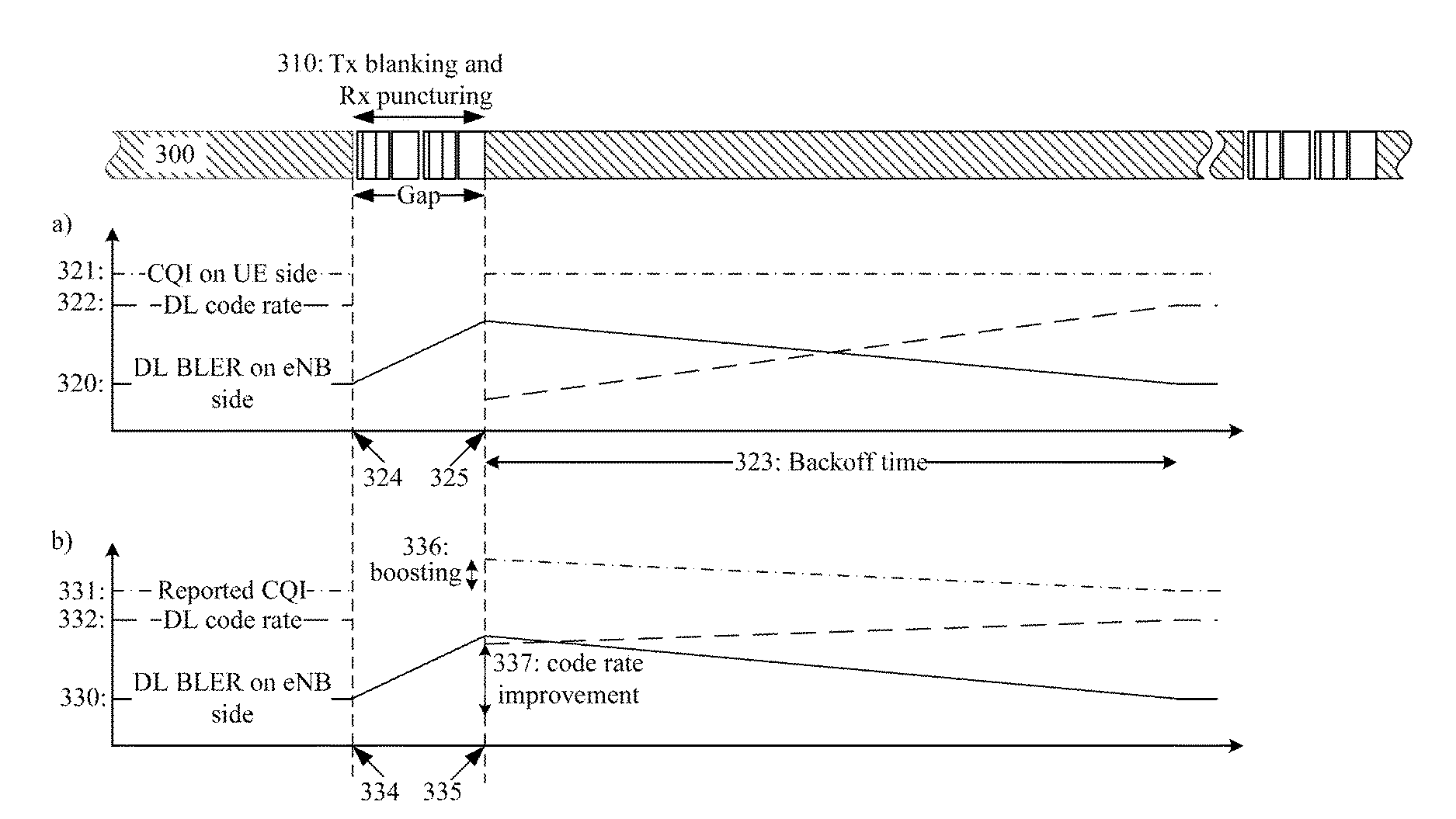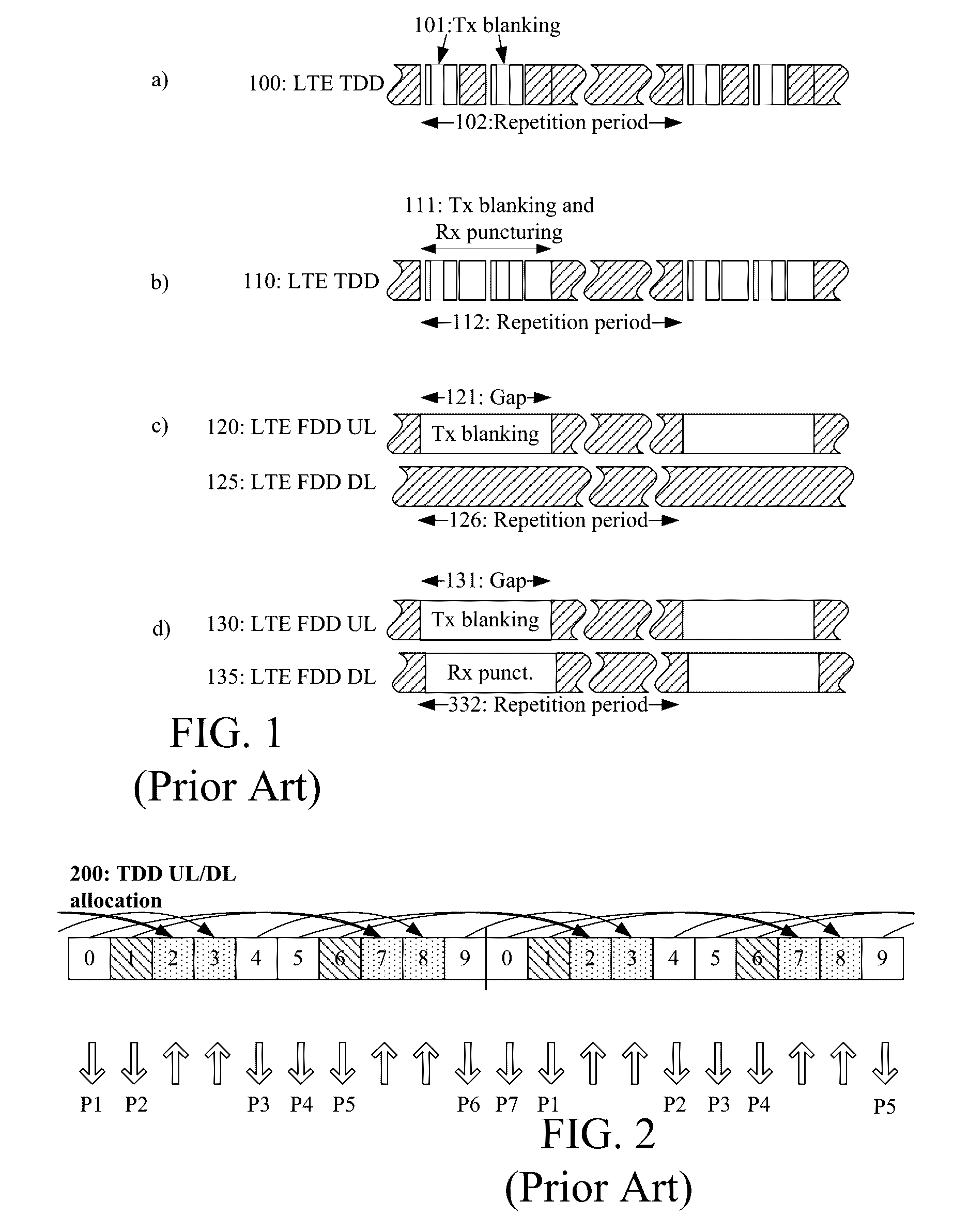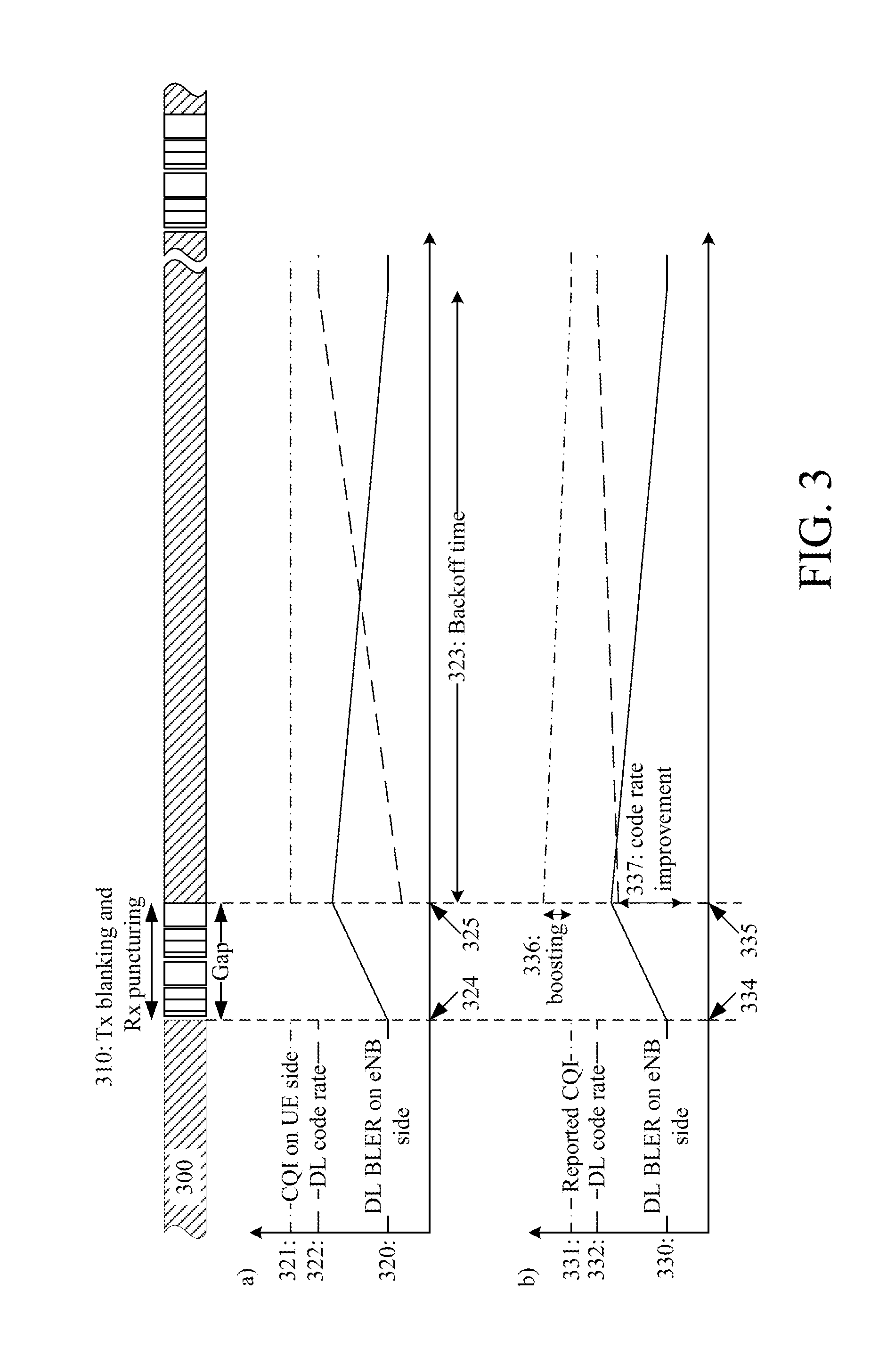Handling of gaps in use of a radio transceiver
a radio transceiver and gap technology, applied in the field of cell communication, can solve the problems of inability of wireless communication devices to transmit channel condition indication reports, inability of wireless communication devices to transmit harq (hybrid automatic repeat request) ack, lack of harq ack/nack, etc., to achieve accurate offset determination, increase throughput, and reduce the effect of throughput loss
- Summary
- Abstract
- Description
- Claims
- Application Information
AI Technical Summary
Benefits of technology
Problems solved by technology
Method used
Image
Examples
Embodiment Construction
[0093]In the following, embodiments will be described where a MCS back off applied by a network node due to a transmission and / or reception gap autonomously created by a wireless communication device is compensated for by the wireless communication device to avoid (or at least minimize) throughput loss due to the gap. The compensation by the wireless communication device comprises application of an offset value to a channel condition indication (e.g. CQI or CSI), wherein the offset value is determined in relation to the applied MCS back off. Some embodiments relate to determination of the offset value by the wireless communication device.
[0094]Without being considered as limiting, UE will be used as an example of a wireless communication device and CQI will be used as an example of a channel quality indication in many of the examples herein.
[0095]In some typical embodiments, the UE keeps track of the impact an autonomous gap has on the code rate (network back off) and how long the i...
PUM
 Login to View More
Login to View More Abstract
Description
Claims
Application Information
 Login to View More
Login to View More - R&D
- Intellectual Property
- Life Sciences
- Materials
- Tech Scout
- Unparalleled Data Quality
- Higher Quality Content
- 60% Fewer Hallucinations
Browse by: Latest US Patents, China's latest patents, Technical Efficacy Thesaurus, Application Domain, Technology Topic, Popular Technical Reports.
© 2025 PatSnap. All rights reserved.Legal|Privacy policy|Modern Slavery Act Transparency Statement|Sitemap|About US| Contact US: help@patsnap.com



